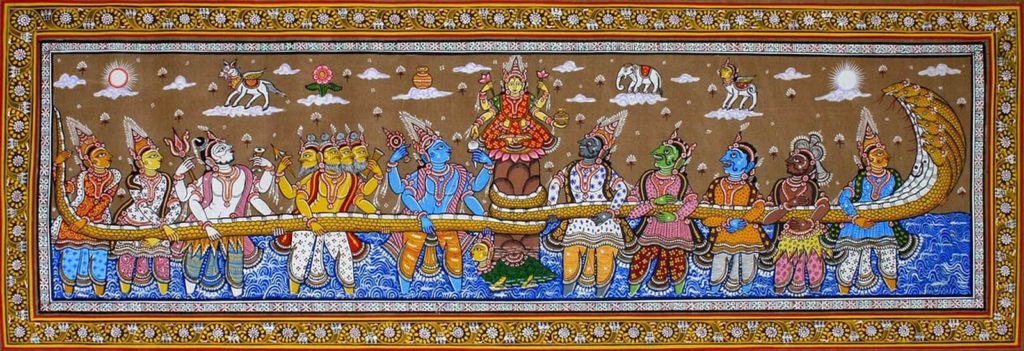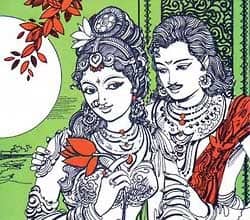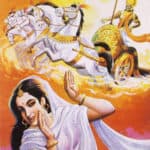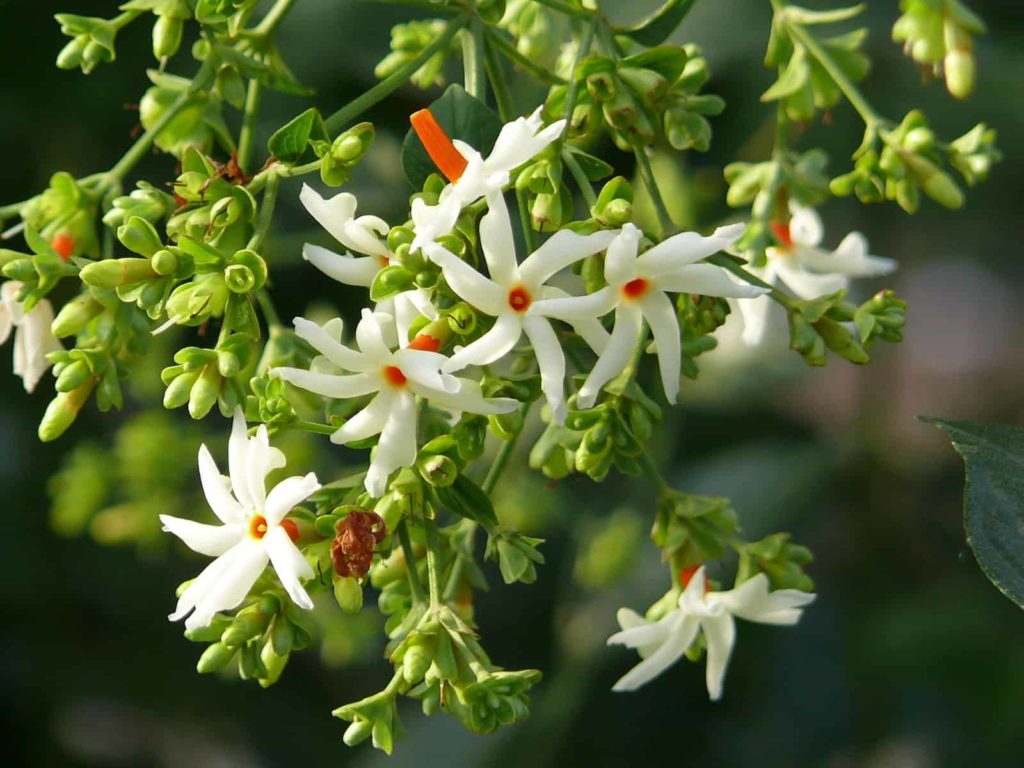 Our special garland for #3 With Nature was devised by Tanya Dutt, who swapped an Indian summer for a bone-chilling Melbourne winter to help produce this issue. To honour the contributors to the issue present at the Cairns Indigenous Art Fair, she made this garland fashioned from pages of a book about Australian craft, which tells the story of the tragic love of Parijat—the night jasmine.
Our special garland for #3 With Nature was devised by Tanya Dutt, who swapped an Indian summer for a bone-chilling Melbourne winter to help produce this issue. To honour the contributors to the issue present at the Cairns Indigenous Art Fair, she made this garland fashioned from pages of a book about Australian craft, which tells the story of the tragic love of Parijat—the night jasmine.
There are many stories and references in the Puranas and the Mahabharat to the Parijat tree. Known as the Night Jasmine and even Queen of the night, it has several beneficial properties for the mind and body.
It is said that it was one of the sacred treasures and among the five divine trees that came out from the milking of the universe and that the Gods, kept this flower for themselves in Indra’s garden. But karma and justice plays out even on Gods and therefore, just as it was meant to be, Parijat is now shared by all.
Parijat is also known in India as Harsingar, or the ornament of The Gods. It is therefore the only flower that can be offered to the Gods after picking it up from the ground. The flower is said to also help one remember one’s past lives and incarnations. In this reference there is a story from ancient texts.

Princess Parijat was said to be a very beautiful yet sensitive princess who fell in love with Surya, the Sun God as he rode his fiery chariot from the east to the west in the sky. Her father and others had warned her that loving a divine being is not advisable for earth bound humans, most especially Surya, the Sun God whose power is supremely intense. However, Parijat cannot be persuaded otherwise and is devoted to Surya with all her heart. Surya is swayed to leave the heavens and come down to Earth to be with Parijat for a while, but soon grows tired of Earth and longs to return to his heavenly abode. Come summer, Surya’s power becomes so intense that he must leave for the heavens and when Parijat tries to follow him she is burned. Surya turned to the Gods for help. The Gods knew Parijat had loved Surya with all her heart, so they granted her another life and she is reincarnated as a tree. From her ashes arose a single tree with the purest of white flowers and with blazing orange hearts. A symbol that Surya always remained in her heart – the Sun God now visits her during the night and the flowers are so fragrant because they have been kissed by Surya. They, however, still can’t bear the rays of the sun and at the first stroke of dawn, at the sight of the rays – they shed

Come summer, Surya’s power becomes so intense that he must leave for the heavens and when Parijat tries to follow him she is burned. Surya turned to the Gods for help. The Gods knew Parijat had loved Surya with all her heart, so they granted her another life and she is reincarnated as a tree. From her ashes arose a single tree with the purest of white flowers and with blazing orange hearts. A symbol that Surya always remained in her heart—the Sun God now visits her during the night and the flowers are so fragrant because they have been kissed by Surya. They, however, still can’t bear the rays of the sun and at the first stroke of dawn, at the sight of the rays. They shed like tears of pain, spreading their sweetest fragrance, reminding us of the lingering love that Parijat pledges to the Sun even after she has died.
- Theo Tremblay garlanded in Cairns
- Abe Muriata, master craftsman and expert in the jawun, garlanded in Cairns.
- Carla van Lunn garlanded in Cairns
- Sonja Anderson garlanded in Cairns.
- Freya Carmichael, curator of Gathering Strands exhibition, Redland Art Gallery, Cleveland, Queensland, containing basket work from south-east Queensland.
- Designers of the future. Jizara on the right made her own t-shirt with the laughing crocodile design.
- These ladies from York Island don’t need any more garlands to brighten up their appearance.
- Tanya Dutt enjoying the cultural feast at CIAF with her Parijat garland.











Comments
Harishankar warks
Will you sell the tapestry of the Churning of the milk ocean? Or point me where I can find something similar? I have something similar from Jaipur. Thanks!
Thank u
I always find the scent of Parijata very evocative and mysterious.
The article is so beautifully written.
Loved it. Though there is a repeat of the same paragraph.
Thank you Sutanu
Just read the beautiful story of the parijata flower reminded me of my childhood days n the parijata tree in the neighborhood
Thank you to post this lovely story!